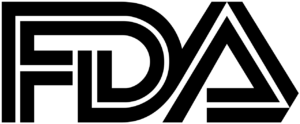The U.S. Food and Drug Administration (FDA) is a federal agency whose mission is to protect public health “by ensuring the safety, efficacy, and security of human and veterinary drugs, biological products, and medical devices; and by ensuring the safety of [the U.S.] food supply, cosmetics, and products that emit radiation.” It also regulates tobacco products. The 1906 Pure Food and Drugs Act, championed by chemist Harvey Washington Wiley, began FDA’s regulatory work more than two decades before the agency was formally named in 1930. Chemical analysis of agricultural products in the U.S. dates back to 1848.
Drug Development
The FDA branch known as the Center for Drug Evaluation and Research (CDER) is central to the agency’s drug approval process. CDER oversees clinical trial processes for prospective drugs. It is tasked with reviewing and approving experimental protocol as well as drug safety and efficacy evidence submitted by companies.
After a drug has been developed through laboratory research, preclinical research commences with laboratory and animal testing. If these trials are successful, the drug will advance to clinical research – that is, testing in humans – at which point the FDA becomes involved. The development of psychedelic-related drugs typically involves filing an Investigational New Drug (IND) application. According to the FDA’s website, “A physician might submit a research IND to propose studying an unapproved drug, or an approved product for a new indication or in a new patient population.” IND approval allows a drug to be transported across state lines to clinical investigators.
Clinical trials are made up of three phases, involving progressively larger participant groups. Phase I primarily evaluates drug administration, dosing, and safety. Phase II takes a closer look at the drug’s efficacy with respect to its treatment target and also examines side effects. Phase III helps to clarify the drug’s benefits, comparing it to existing or standard treatments. Phase III trials may take years and are usually randomized, controlled, and double-blind. Once a drug has progressed through the required research steps, a developer submits its study results via a New Drug Application. More details on the stages of drug development can be found on the FDA’s website.
Regulating Psychedelic Medicine
Psychedelic research was blossoming prior to LSD’s ban in 1966 – a reaction to the decade’s counter-culture movement. Research all but shut down. Since then, regulatory hurdles have slowed its resurgence. Additionally, to date, the FDA has approved only four cannabis-related products for prescriptions: Epidiolex (purified CBD), Marinol and Syndros (dronabinol, a synthetic THC), and Cesamet (nabilone, a synthetic compound chemically similar to THC).
A 2019 Psychedelic Science Review article discussed the regulatory challenge posed by the conflict between psychedelics’ therapeutic potential and their status as federally controlled substances. Most psychedelics are classified as Schedule 1 drugs under the Controlled Substances Act enforced by the U.S. Drug Enforcement Administration. While they are separate processes, FDA approval for medical or therapeutic use typically precedes a drug’s rescheduling.
Third Wave
The FDA’s engagement with psychedelics has evolved in recent years as public interest in and research initiatives around them have grown. In April 2019, US Senator Brian Schatz wrote a letter to former FDA Commissioner Dr. Scott Gottlieb and National Institutes of Health Director Dr. Francis Collins, inquiring about the agencies’ recent psychedelic research efforts. Their reply, dated June 13, 2019, mentions NIMH (National Institute of Mental Health) funding of clinical ketamine research and basic research on psychoactive drugs like LSD, as well as NIDA funding of ibogaine and related compounds to treat addiction. Dr. Collins and Dr. Gottlieb also highlighted the need for more research around the efficacy and long-term safety of psychedelic treatments. While they cited “a high potential for abuse” as the reason for psilocybin, LSD, MDMA, and related substances’ Schedule I status, they also acknowledged that FDA approval could initiate rescheduling. Psychedelic Science Review summarized the officials’ correspondence.
As of 2021, the FDA has not yet approved the sale of classic psychedelic-based therapies, but it has facilitated psychedelic drugs development and research. For example, the agency can offer “Breakthrough therapy” designation, expediting a drug’s review process if its clinical trial results indicate promise. Companies can also request a similar “Fast-Track” designation. In 2017, the FDA granted breakthrough therapy designation for MDMA for PTSD. In 2018, it approved clinical trials of psilocybin for treatment-resistant depression (read Psychedelic Science Review’s coverage), an application for which the agency later granted breakthrough therapy designation (read Psychedelic Science Review’s coverage.) Psychedelic Science Review also wrote about the FDA granting psilocybin breakthrough therapy designation for major depressive disorder in 2019.
Ketamine was initially approved in 1970 for anesthetic use by the FDA. A form of ketamine called esketamine (marketed as Spravato) earned FDA approval in 2019 for treatment-resistant depression in adults. A Psychedelic Science Review piece discusses whether this could be considered the first FDA approval of a psychedelic drug. Esketamine is also being explored for the treatment of suicidality.
